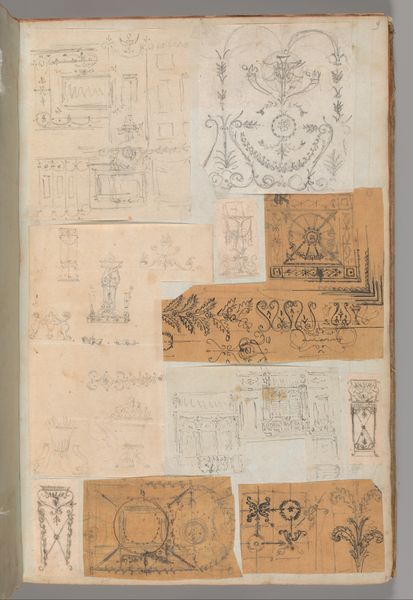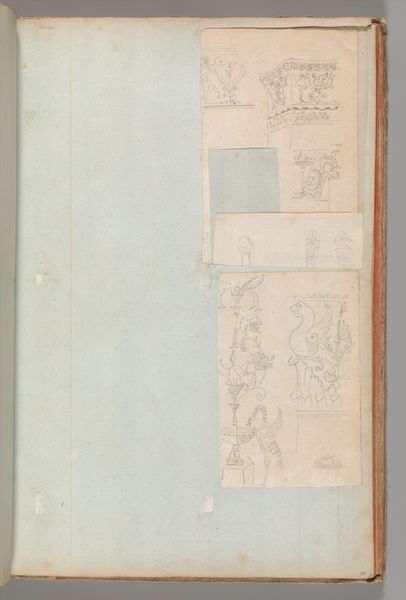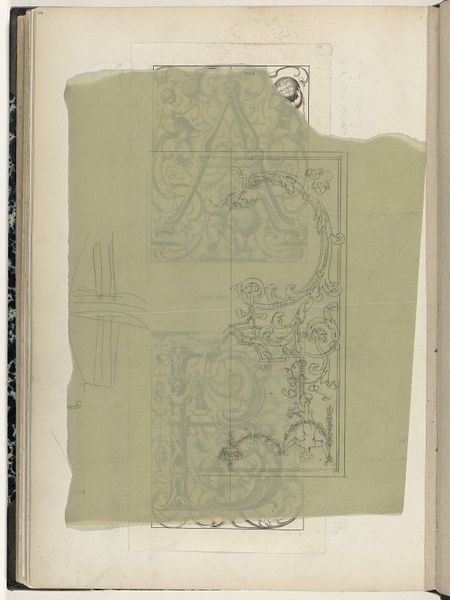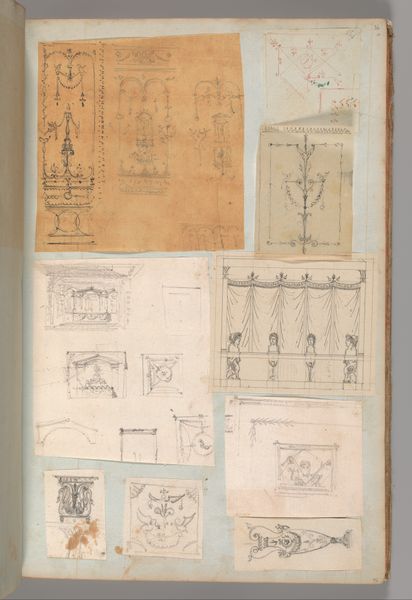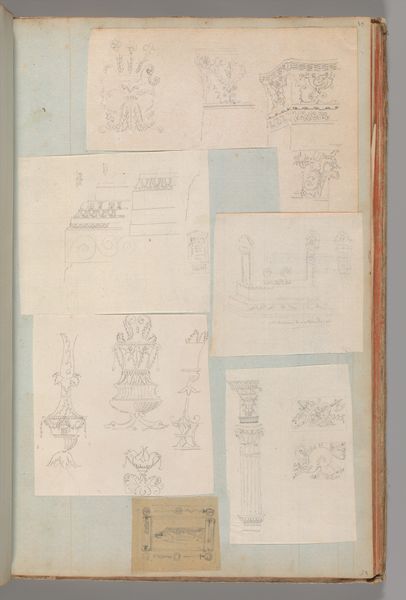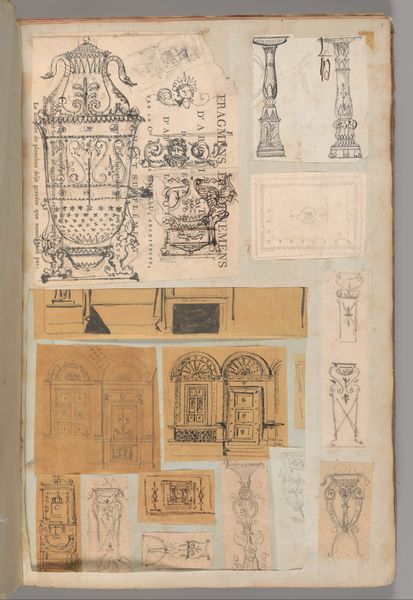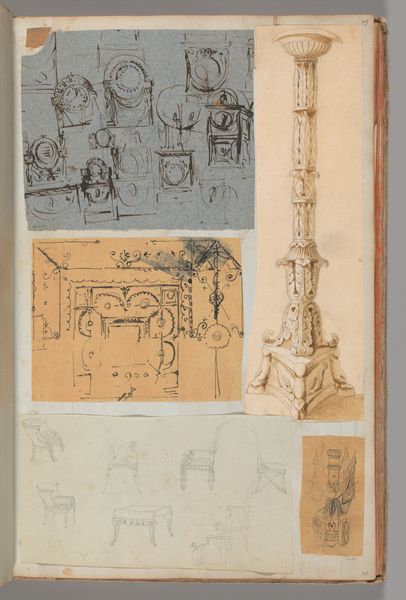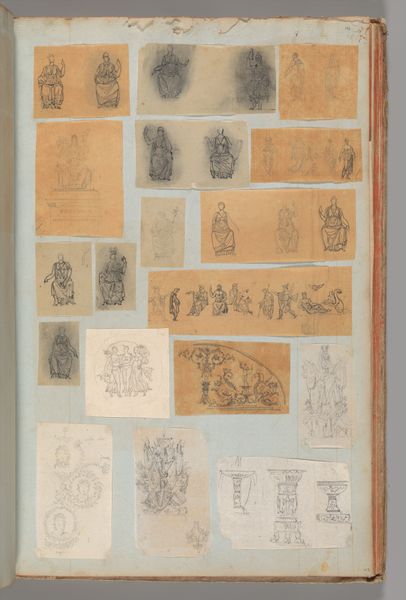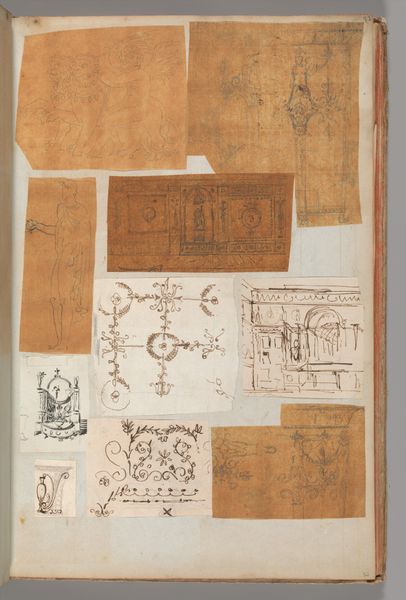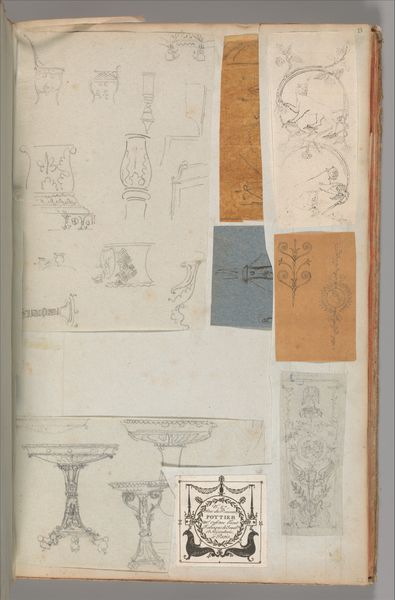
Page from a Scrapbook containing Drawings and Several Prints of Architecture, Interiors, Furniture and Other Objects 1795 - 1805
0:00
0:00
drawing, print, paper, pencil, architecture
#
drawing
# print
#
furniture
#
paper
#
11_renaissance
#
pencil
#
history-painting
#
architecture
Dimensions: 15 11/16 x 10 in. (39.8 x 25.4 cm)
Copyright: Public Domain
Curator: This is a page from a scrapbook by Charles Percier, dating from around 1795 to 1805. It combines drawings and prints, showcasing architecture, interiors, furniture, and other design elements. Editor: It's fascinating how these seemingly disparate images co-exist on one page. The overall effect is one of fragmented memory. Curator: Percier’s methodology is interesting here. Notice the variety of medium: pencil drawings adjacent to prints. This juxtaposition disrupts any singular formal reading. How does this contrast of the copy versus the unique mark influence our reading? Editor: The recurring motifs suggest a clear thematic interest in power and prestige. Look at the recurring winged lions, ancient rulers, even the furniture itself suggests status and control. It almost reads like an inventory of symbolic assets. Curator: Agreed. Let’s think about that. The loose, sketchy nature of the drawing style is certainly interesting when considering power. The quick strokes and unrefined forms contribute to an immediacy that somewhat contrasts with the traditionally formal symbols depicted. Editor: It reminds me of a mood board—gathering of imagery imbued with deep, culturally specific symbolism—and as we know, this historical period was fascinated with Neoclassical grandeur. What seems personal and spontaneous may belie deep-seated values in design. Curator: This is where things get interesting. It becomes an exploration of image deconstruction; how symbols transform between personal imagination and grand public expression. Editor: Exactly. It gives a glimpse into how historical and symbolic weight is transformed by an artist’s imagination—it makes history tangible and emotionally accessible. Curator: Thinking of our own time, digital environments encourage endless visual collages of fragments, creating unique recombinations and juxtapositions that blur meanings. This scrapbook foreshadows the effects of that kind of imagery overload and questions notions of originality in design. Editor: Ultimately, it feels very intimate—a record of inspirations, artistic development, a place where visual traditions become tools for imagining new possibilities.
Comments
No comments
Be the first to comment and join the conversation on the ultimate creative platform.
